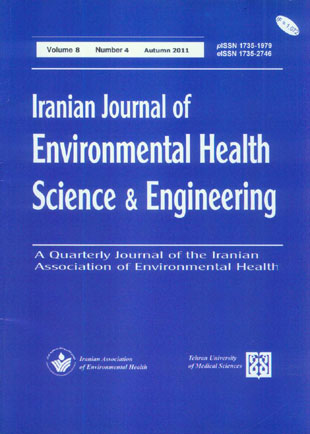Bacteriophage Technique for Assessing Viral Removal in Constructed Wetland and Detention Pond Systems
Author(s):
Abstract:
Constructed wetland and detention pond as a treatment system was applied for stormwater management in two adjacent areas in western Sydney. F-specific RNA and somatic coliphages were used as a model for assessing two systems for removal of viral pollution, fate, behavior and survival of viruses in the sediment. Water samples were collected weekly in sterile containers and sediment samples were collected three times using a box dredge sampler via a boat at the inlet, middle and outlet areas of the systems. F-specific RNA coliphages were enumerated using the double layer plaque assay (ISO 1995) with Salmonella typhimurium WG49 as a host. Survival test continued 28 d for each sub-sample. Viral removal in constructed wetland was more effective than the detention pond system. Survival of somatic coliphages in the inlet and middle of the systems was similar. Slope of declining for outlet of two systems was very slow and completely stable in whole of test duration. Constructed wetland may offer an attractive alternative to stormwater management for reducing the load of disease-causing viruses to the receiving waters.
Language:
English
Published:
Iranian Journal of Environmental Health Science and Engineering, Volume:1 Issue: 2, Autumn 2004
Pages:
8 to 15
https://magiran.com/p425163
مقالات دیگری از این نویسنده (گان)
-
Assessing the Need for Continuity of Preventive Environmental Health Recommendations to Avoid Contamination With COVID-19: A Systematic Review Study
Mohammadali Zazouli, , Hadi Niknejad, Alireza Ala *
Journal of Advances in Environmental Health Research, Summer 2024 -
Investigating the release of microplastics from tea bags into tea drinks and human exposure assessment
Ali Yousefi, Hossein Movahedian Attar*,
Environmental Health Engineering and Management Journal, Summer 2024



